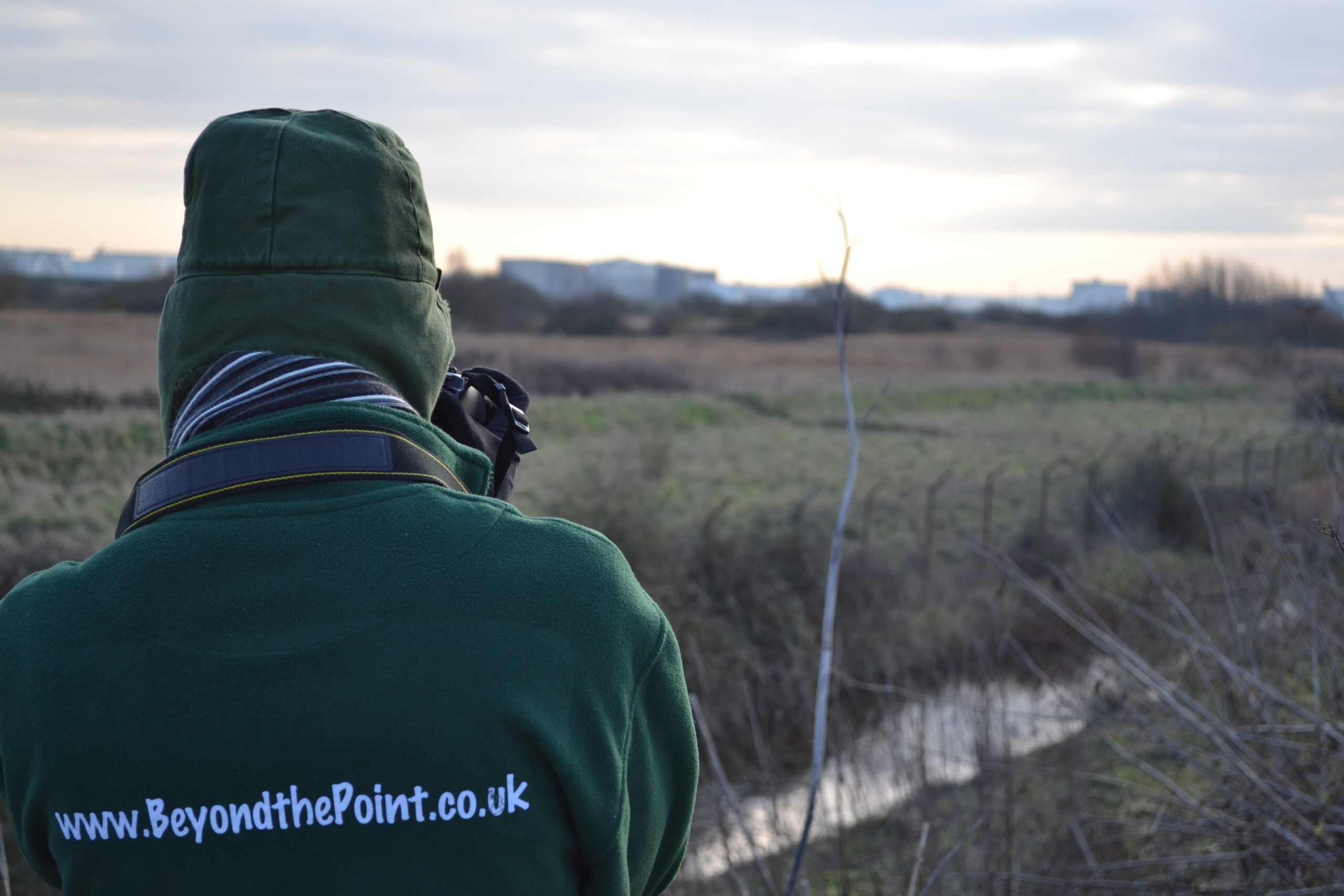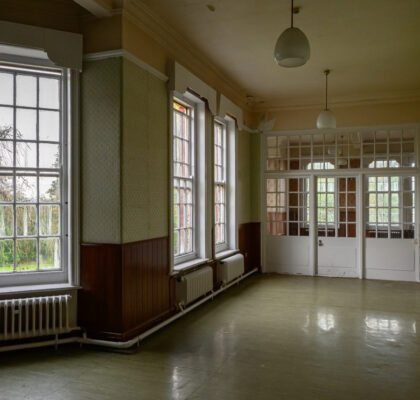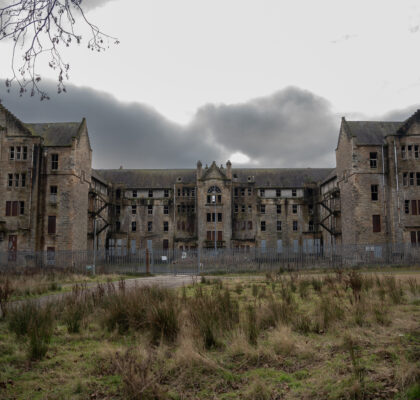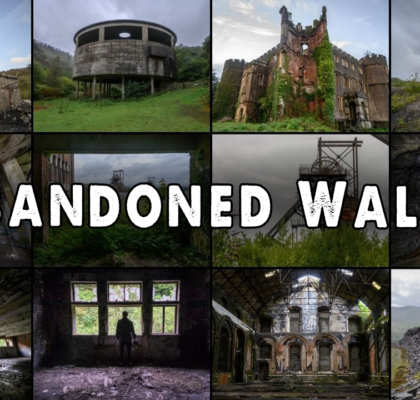
Secret locations, local history, exploring ruins. These phrases capture the essence of what ‘Beyond the Point’ is all about; a website I started about two years ago. So, how did it all begin? I was out exploring with my friend Joe, when I came across a number of strange concrete structures amongst the undergrowth of our local countryside. We were quite puzzled, and Canvey Island was an area we knew well; we lived there, yet still we had no idea what all this concrete was for and why no one had ever mentioned it. Huge blocks were half buried under foreign sand, wires sprang from the soil in arches like giant worms. Clearly, this had all been buried over at some point quite some time ago. Was it a military coverup? No. After a return home and some research, we found it to be the remains of an oil refinery which was half built in the 1970s before its construction ceased. This fascinating unseen side to our local area gave us an interest in the secrets behind our local heritage. We then planned a new trip to Two Tree Island, where we unearthed a Second World War pillbox and a small reservoir from very old sewage works. We realised there was history everywhere, ruined right across the landscape, so we decided to start up what was originally a blog ‘www.BeyondthePoint.co.uk’.
Two years later, we are now a fully-fledged organisation amongst South-East Essex. In the time ‘BTP’ has been around, we have explored countless locations from Tilbury to Shoebury, spoke to a women’s society and an infant’s school, had several articles in local magazines and newspapers, created an hour long DVD and sold it, had three stall displays at local events, and even managed to earn a permanent display in a small-time military museum. What has really amazed me is how easy it is to make a name for oneself – a few emails and showing your face at events will get you a long way, whether it’s getting an exclusive tour around a historic site, or getting to know the local council.
On the other side of the story is the actual exploration element. I’ve ended up getting to see some incredible places without having to travel a couple of miles, all for free, and have them all to myself. Beyond the Point covers all areas of local history from Roman occupation up to the past century, and includes everything from the quite profound Hadleigh Castle, to a derelict fertiliser factory from the 1950s in Stanford-le-Hope. It is a great hobby, because it is usually quite physically demanding and outdoor, so a good way to keep healthy, but also very interesting. It opens up a range of other fields to, such as survival and camping when on longer day trips, and photography which is a very obvious ‘outcome’ of visiting such awesome places. Some places do require a little cunning to access, although the thing is that if people do not document them today, they will deteriorate and eventually end up demolished before those of years to come can appreciate as close to a natural time capsule as one can get. This is what you don’t get from going to refurbished buildings, or seeing artefacts nicely polished in glass cabinets at museums. It all adds to the thrill of the moment, but of course you also come away with some important information for the future.
The best place I have visited is a Victorian sea defence battery constructed from 1887-93 in East Tilbury, near Coalhouse Fort. One minute you’re in a kids park surrounded by a council estate; you hop over the anti-toddler fence, and you’re in a patch of woodland. After a few steps you realise something isn’t quite right about the place, as that familiar mossy decayed aesthetic of bricks and concrete pops from the foliage. Consisting of six circular concrete gun-mounts, some brick outbuildings, and an array of pristine tunnels, this place is a real treat. On goes the fingerless gloves and head torch, and you’re in. The darkness greets you like a thick, tempting, void. The stunning iconic 19th Century archways guard the entrance. In you go. You notice signs and eventually equipment knocking about preserved after abandonment before the First World War even took off. These tunnels, used to hoist rounds up to the guns above, run under the battery, and it is quite extraordinary to see ‘Cartridge Lift Right ->’ still preserved on the wall, and a cobwebbed shell hoist lurking at the end of the next dark corridor. Now you get the idea – even if you hate history, you won’t resist exploring these rare places. Another great place, a long-time favourite of mine, is Canvey’s abandoned refinery jetty. As mentioned before, it was never properly built, but this jetty was. At 1 mile long and 40 feet or more high, it offers incredible views into the oil refinery at Coryton and the Thames, whether at day or night. Going up the old steps takes some courage, but it’s things like pushing your fear of heights that little bit more each time which ices the cake. I’ve taken several classmates on various trips, and they’ve all loved it.
Even if I do a lot of it for the experience, the history behind it makes it feel ‘valuable’ – not just some lingering junk, but as if its past has given it a unique flavour. I am in strong touch with local community archives, and can certainly pass as a ‘local historian’ in certain towns. Local history itself – what some could call the ’boring’ part of Beyond the point, leaves you wondering in awe after you have seen some of the more interesting things. It’s that thought of a completely different version of the area you live in, or go to school in, day in day out, that the past presents. Did you know that 100 years ago you would have seen a railway crossing over the current one in the Hadleigh downs by a red-brick viaduct? I bet not. What’s more is that part of that viaduct is still there – whilst the castle some meters away and is known by almost everyone, you will shamefully struggle to find a mention of the viaduct online. And that is where Beyond the Point’s slogan comes in – ‘Revealing the unseen history of South-east Essex’.




Awesome article.